Navigation
Install the app
How to install the app on iOS
Follow along with the video below to see how to install our site as a web app on your home screen.
Note: This feature may not be available in some browsers.
More options
Style variation
You are using an out of date browser. It may not display this or other websites correctly.
You should upgrade or use an alternative browser.
You should upgrade or use an alternative browser.
China Auto Thread
- Thread starter StraightEdge
- Start date
Yommie
SpeedLimited
- Oct 2, 2013
- 64,173
- 37,188
- Country of Origin

- Country of Residence

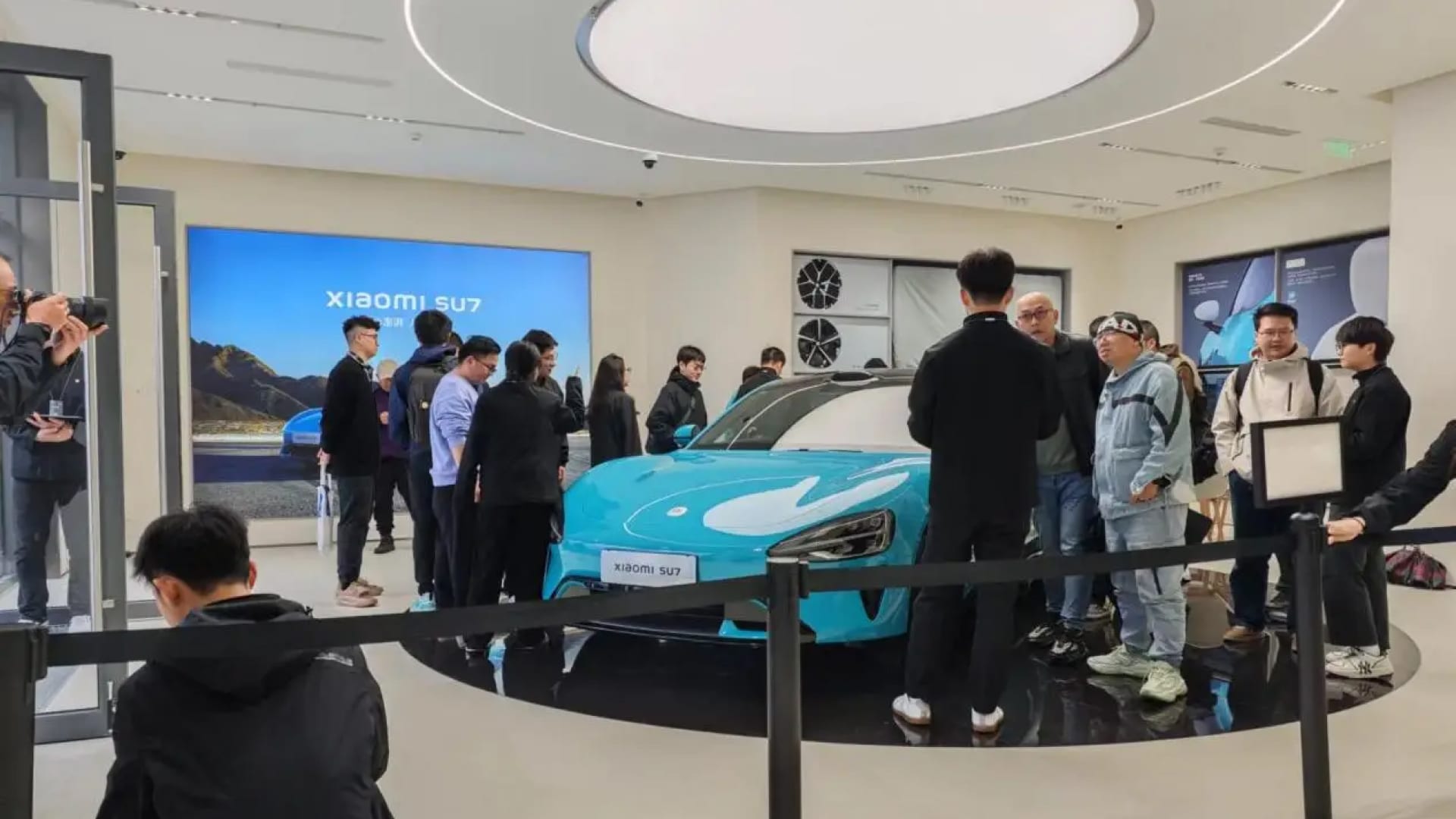
Xiaomi SU7: customers line up for test drives until 3 am
Multiple complaints on consumer rights platforms about Xiaomi Car pre-order cancellations. Lawyers replied.
 carnewschina.com
carnewschina.com
Xiaomi SU7: customers line up for test drives until 3 am
Reading Time: 3 minutes
Adrian Leung
March 31, 2024
0
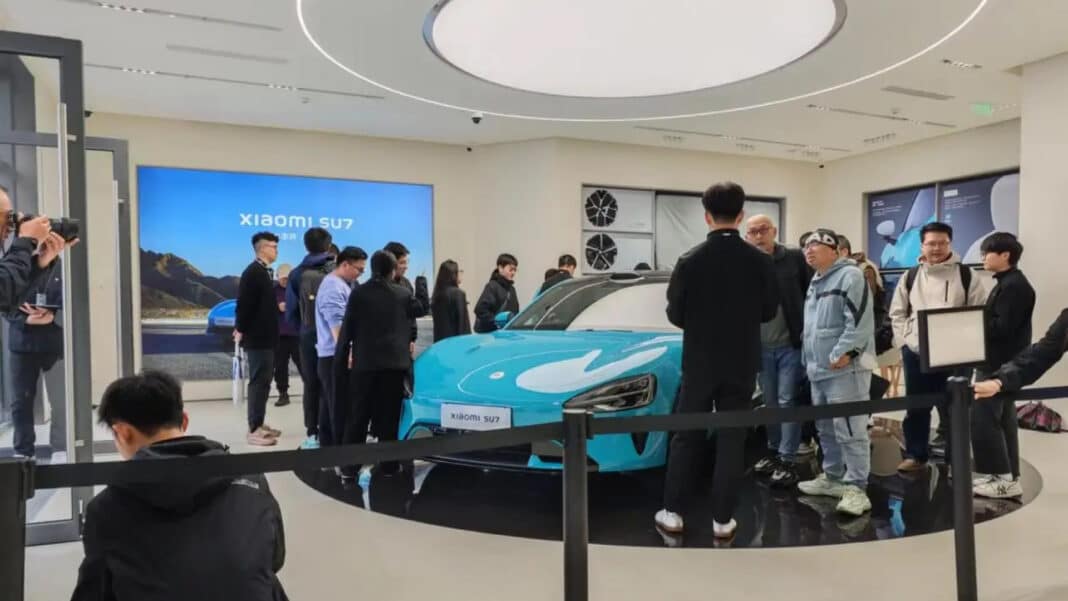
News like this to your inbox or phone?
Weekly summary to your inbox
I want this
Never miss and important news
Get Instant notification once the news is published.
Follow Us
Since its launch on March 28, the Xiaomi SU7 has not only gone viral on social media across China. People have gone into a frenzy over the first car from the tech giant. It’s been reportedly that scalpers who paid deposit are selling their purchasing rights to the SU7 inflating it by as much as 100,000 yuan (13,850 USD).
Meanwhile, the manager of the Xiaomi Auto dealership in Shanghai confirmed that approximately 10,000 people visited the dealership not only to have a glimpse of the SU7 but also in hopes of scheduling a test drive. “Test drives were scheduled until 3 am on March 30,” the manager said. “Those who have paid the deposit have priority to test drive the SU7.” Other Xiaomi Auto dealerships are sharing similar stories across China. This is a rare site at dealerships from legacy automakers.
Since Xiaomi announced 88,898 firm orders were received for the SU7 within 24 hours after the launch. There are multiple complaints on consumer rights platforms about Xiaomi pre-order cancellations. The controversy was about the non-refundability of deposits. In response, some lawyers have stated that Xiaomi’s actions are legal and compliant with the law. Xiaomi clearly outlined the deposit policies in the purchase agreement. The deposit acts as a guarantee. There is a grace period, where deposits can be refunded within 7 days. After 7 days, the vehicle configuration will be locked and the car will go into production. No other carmakers offer such grace period for a refund.
According to Xiaomi’s official statements, customers who place pre-orders before April 30th will receive free upgrades. This includes a fridge, a 25-speaker Dolby Atmos entertainment system, Nappa leather seats, and Xiaomi Pilot Pro total valued at 34,000 yuan (4,700 USD).
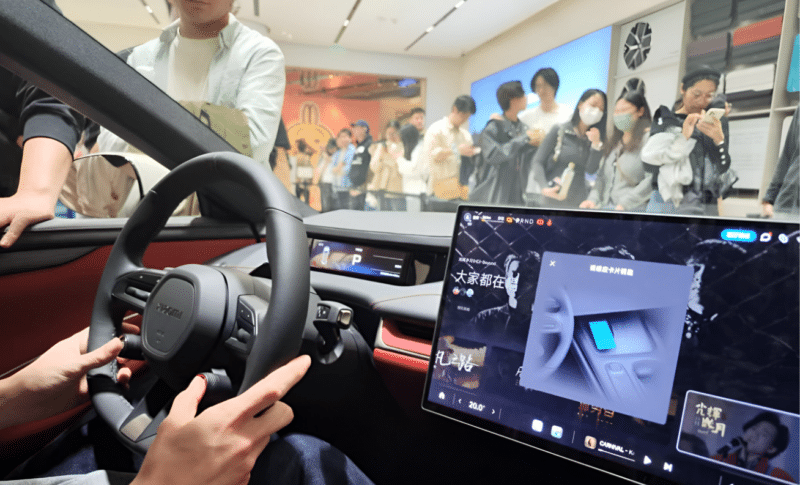
Xiaomi SU7 Max has dual motors, producing 495 kW (663 hp). It is powered by a 101 kWh Qilin battery from CATL, providing an 800 km CLTC range. With dimensions of 4997/1963/1440 mm and a wheelbase of 3,000 mm.

Xiaomi partners with BAIC for SU7 production at the new Beijing plant. BAIC’s subsidiary is responsible for SU7’s assembly. Xiaomi’s new plant was completed in June last year. Trial production of the SU7 started in December 2023. In 2024, Xiaomi aims to produce around 100,000 cars based on current levels. Initial orders exceeded 90,000 within 24 hours, likely surpassing 100,000 units after 48 hours.
Xiaomi SU7 will commence deliveries of the Standard and Max versions by the end of April. The Pro edition will begin deliveries by the end of May.
Yommie
SpeedLimited
- Oct 2, 2013
- 64,173
- 37,188
- Country of Origin

- Country of Residence

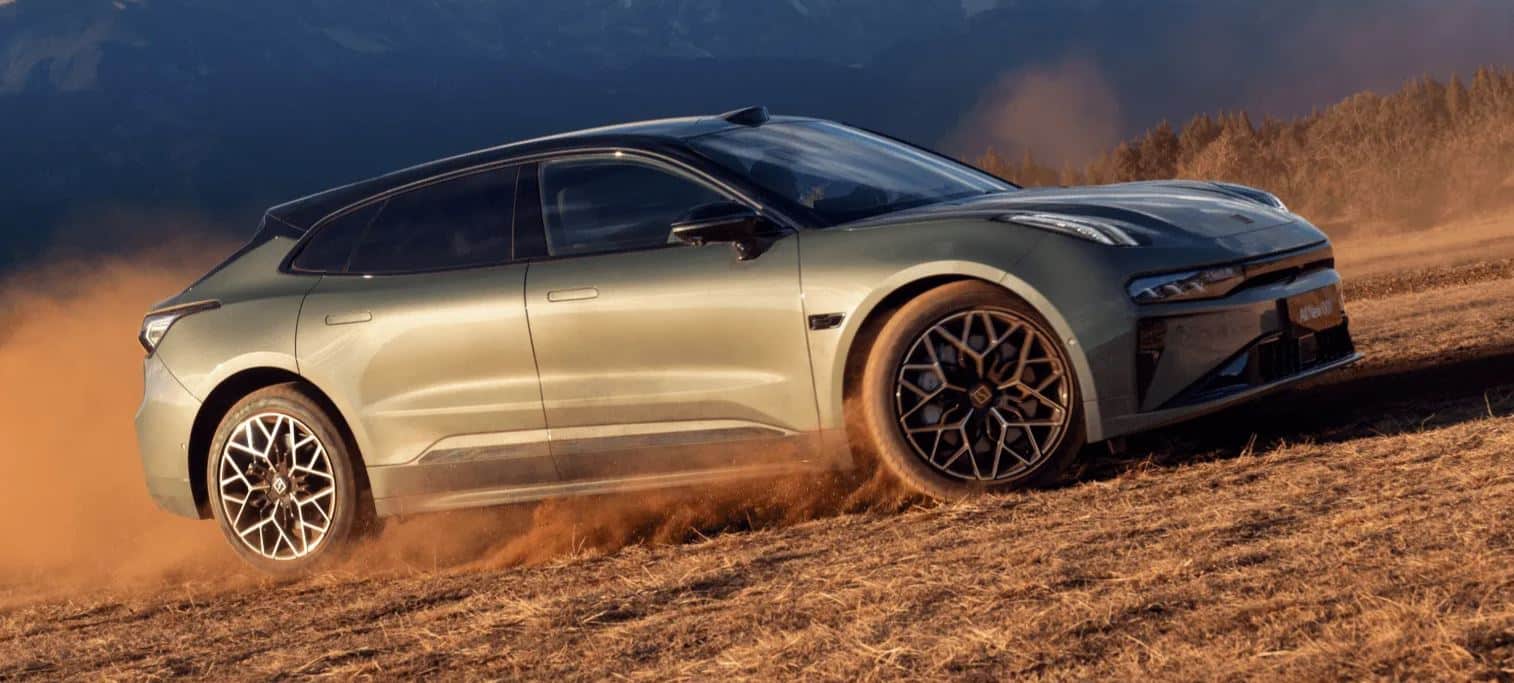
All New Zeekr 001 received more than 30,000 firm orders one month after launch
The All New Zeekr 001 supports seven driving modes and offers three ranges: 675 km, 705 km, and 750 km.
 carnewschina.com
carnewschina.com
All New Zeekr 001 received more than 30,000 firm orders one month after launch
Reading Time: 3 minutes
Dong Yi Chen
March 31, 2024
0
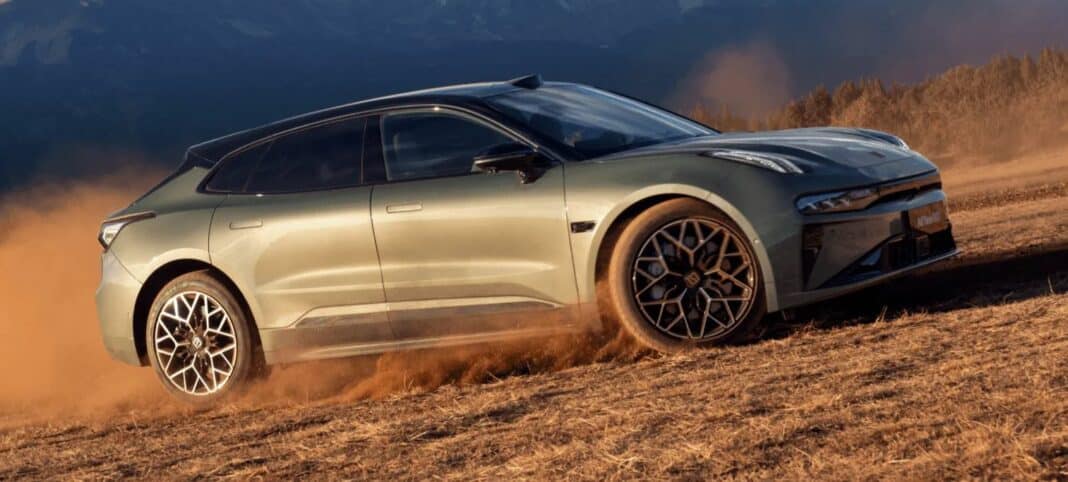
News like this to your inbox or phone?
Weekly summary to your inbox
I want this
Never miss and important news
Get Instant notification once the news is published.
Follow Us
On March 30, Zeekr announced that the cumulative firm orders received for its All New Zeekr 001 exceeded 30,000 units in the first month of its launch. Then on March 31, Guan Haitao, Chief Marketing Officer of Zeekr, shared that the firm order number hit a new single-day high, exceeding 2,500 units. As a facelift model, the new car has been upgraded in terms of appearance and configuration.

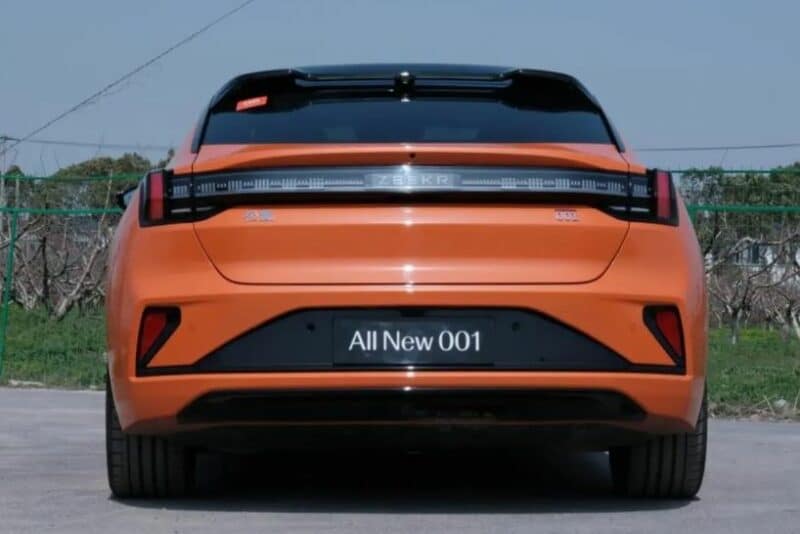
Four models of the All New Zeekr 001 were launched on February 27, with a price range of 269,000 – 329,000 yuan (37,500 – 46,300 USD). Existing customers who place an order before March 31st will receive a lifetime free ZAD (Zeekr Assisted Drive) intelligent driving assistance system worth 35,000 yuan (4,900 USD).
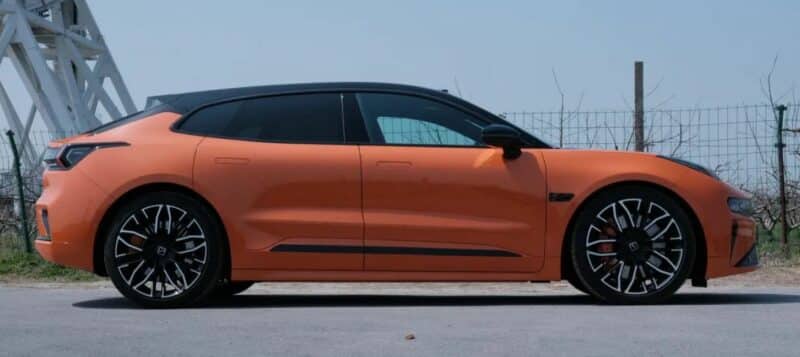
The size of the All New Zeekr 001 measures 4977/1999/1545 (1533) mm, with a 3005 mm wheelbase. Seven driving modes are supported: comfort, economy, sport, snow, sand, off-road, and personalize.
The entire series comes standard with an 800V high-voltage platform and the top speed is 240 km/h.
- YOU version: four-wheel drive, 580 kW/810 Nm dual electric motors, 100 kWh CATL Qilin battery, 705 km range, 0 – 100 km/h acceleration in 3.3 sec
- ME version: four-wheel drive, 580 kW/810 Nm dual electric motors, 100 kWh CATL Qilin battery, 705 km range, 0 – 100 km/h acceleration in 3.3 sec
- WE version: four-wheel drive, 580 kW/810 Nm dual electric motors, 95 kWh CATL Shenxing battery, 675 km range, 0 – 100 km/h acceleration in 3.5 sec
- WE version: rear-wheel drive, 310 kW/440 Nm electric motor, 100 kWh CATL Qilin battery, 750 km range, 0 – 100 km/h acceleration in 5.9 sec
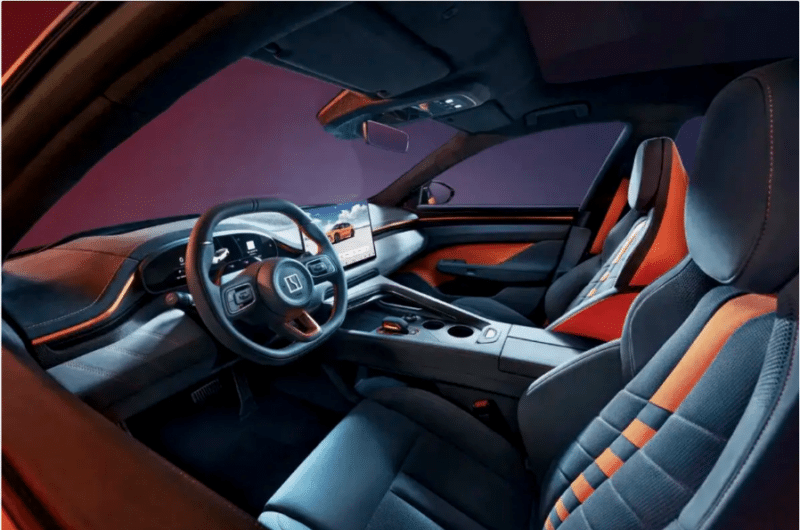
As of March 29, the new Zeekr 001’s cockpit is paired with Huawei’s HiCar system, which can support simultaneous connection of two mobile phones. While one mobile phone is connected to the HiCar system, the second mobile phone can still connect to the vehicle’s Bluetooth system. The two mobile phones can remain connected at the same time, and users can freely choose to use one of the mobile phones to make and receive calls.

Source: Zeekr
Hamartia Antidote
Elite Member
- Nov 17, 2013
- 39,483
- 22,833
- Country of Origin

- Country of Residence

Yommie
SpeedLimited
- Oct 2, 2013
- 64,173
- 37,188
- Country of Origin

- Country of Residence

Car manufacturers remotely disabling people's cars
Millions of China’s EVs Could Be Remotely Locked by Manufacturers, $70K Luxury Models Turn to Junk
@Yommie Watch to the end...very very interesting and spooky.
Listen to this at least
It's possible but unlikely. Trust with customers is important for manufacturers. The only way that's possible is if all the EV makers collude and all of them do that.
Realistically, there will always be some EV makers that do not have such a feature to remotely lock a customer's car.
Last edited:
Yommie
SpeedLimited
- Oct 2, 2013
- 64,173
- 37,188
- Country of Origin

- Country of Residence

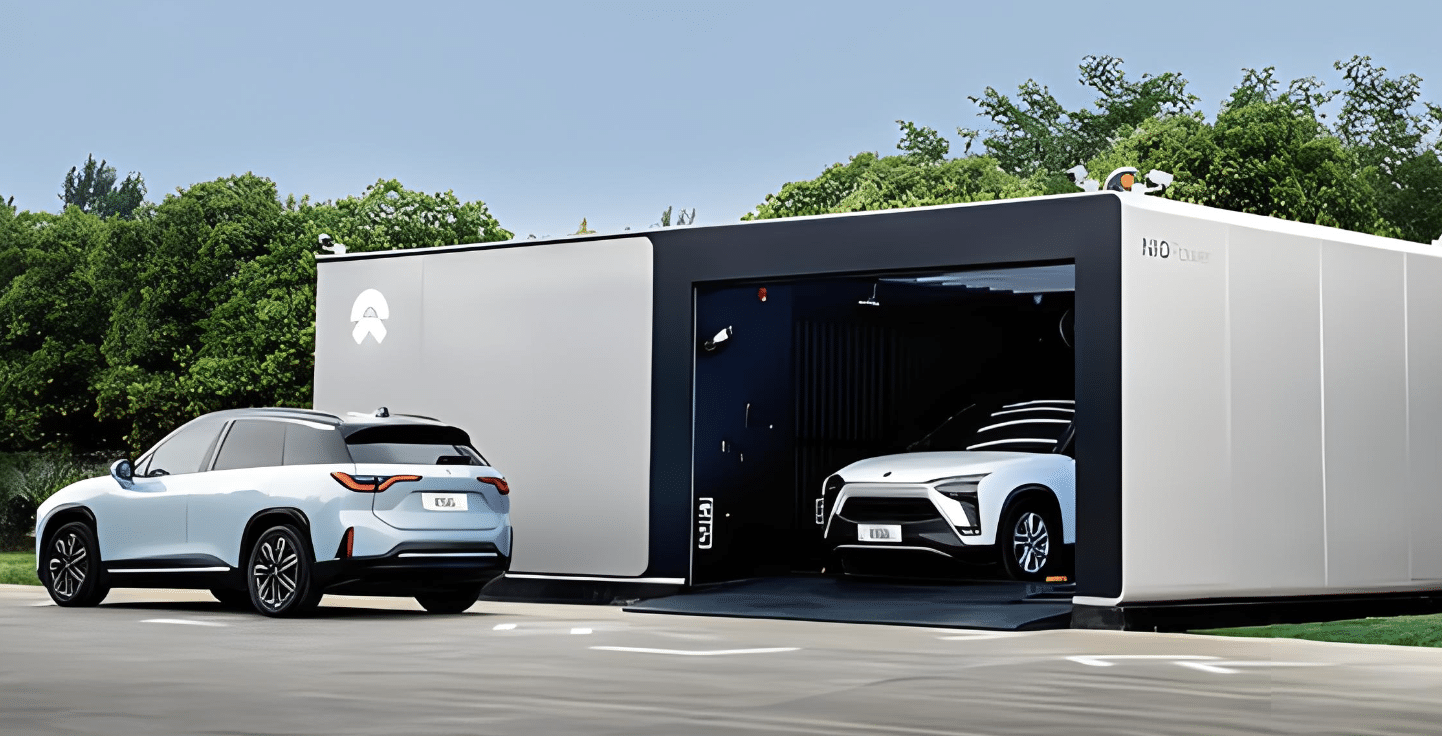
Nio’s charging network expansion: collaborating with Geely and reducing battery swap fees
The EV charging network is ever expanding.
 carnewschina.com
carnewschina.com
Nio’s charging network expansion: collaborating with Geely and reducing battery swap fees
Reading Time: 2 minutes
Naveed Rastegar
April 1, 2024
0
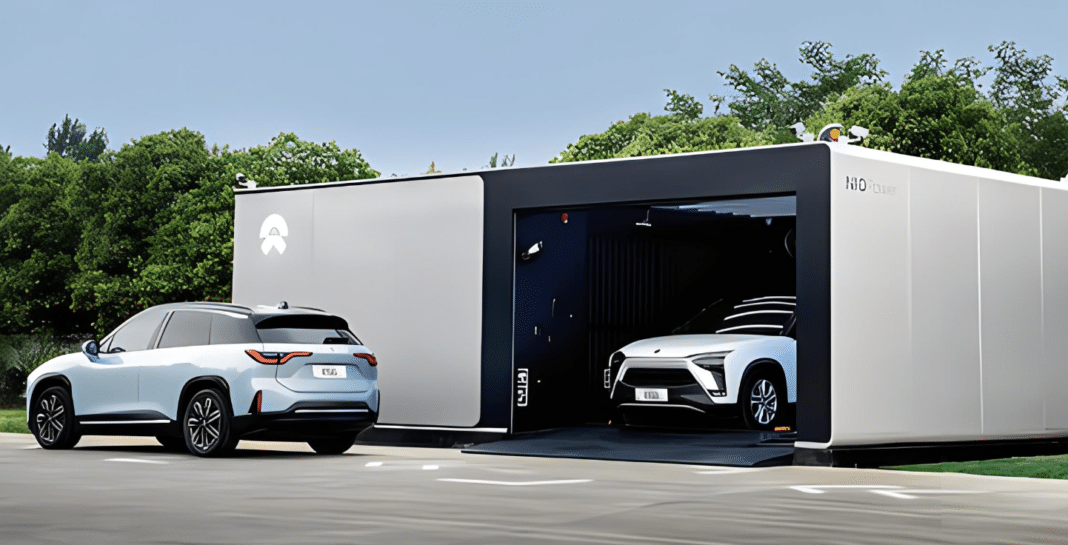
News like this to your inbox or phone?
Weekly summary to your inbox
I want this
Never miss and important news
Get Instant notification once the news is published.
Follow Us
The continuous growth of electric vehicle (EV) ownership puts pressure on the charging network, and open and interconnected charging networks among automakers are emerging as a solution. On March 27th, Nio and Geely Group announced further cooperation in charging network interconnection. Through the brand’s app, users of Geely’s vehicles can access real-time information about Nio’s charging stations and complete operations like scanning for charging and making payments.

According to the “McKinsey 2024 China Automotive Consumer Insights” report, economically developed provinces and cities have a lower ratio of new EVs to public charging stations than other areas, partially alleviating the supply-demand relationship for charging in those regions. However, the ratio has significantly increased in different provinces and cities, leading to a more strained charging resource situation.
Nio, a leading automaker in developing charging networks, has taken action. It has established partnerships for battery swapping with various companies and plans to build 1,000 battery-swapping stations in collaboration with Zhongan Energy. By October last year, Nio had already established over 2000 swap stations.

In addition, it was announced today that Nio has reduced the fee for its battery swap program. The BaaS (battery-as-a-service) model is one of Nio’s most controversial programs, with some users praising the program while others claim it is not practical on a large scale. Nio offers two options for car buyers: standard purchase and subscription. The subscription service saw its first markdown today, making it more affordable and available retroactively to subscribers. The first tier subscriptions now cost 582 RMB (80 USD), down from 728 RMB (100 USD).
The interconnection between Nio and Geely in the charging network may set a trend for automakers to open up their dedicated charging stations to other brands. Tesla has already started doing so by opening its charging network to non-Tesla EVs and expanding the scale of shared charging stations.
Detailed strategies and arrangements are necessary to ensure a smooth transition to open charging networks. These may include setting exclusive charging hours for specific brands, adjusting charging service fees for other brands, and implementing measures to manage peak hours and prevent conflicts over charging stations among different brands and vehicle types.
Opening charging stations is considered a necessary step to improve charging efficiency. It allows for better resource utilization and promotes the development of a comprehensive and accessible charging network for all EV owners. More collaborations among Chinese automakers are sure to follow.
Source: CDZ Vision & Gao Cars
Yommie
SpeedLimited
- Oct 2, 2013
- 64,173
- 37,188
- Country of Origin

- Country of Residence

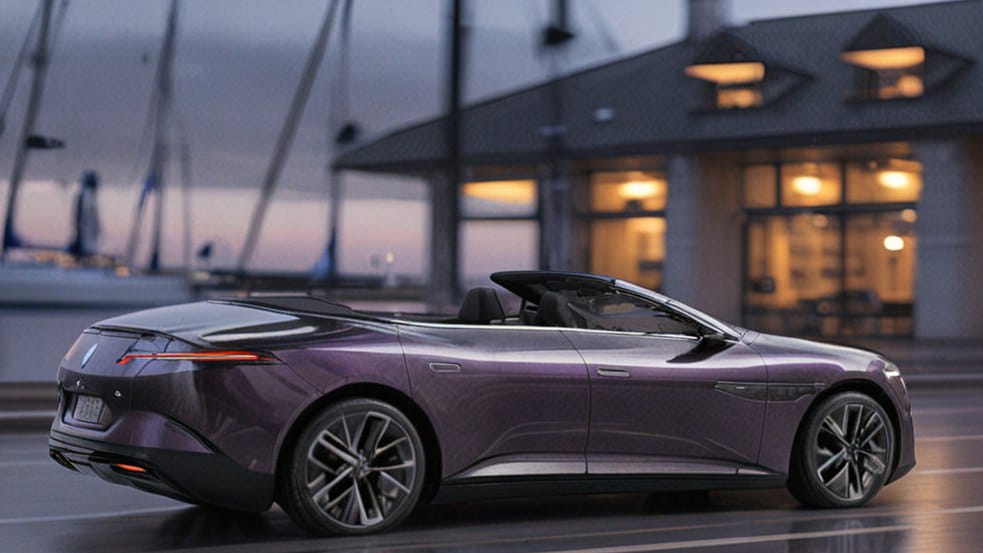
Avatr 12 today becomes the Airvatr 12 – the world’s most beautiful EV convertible
Avatr 12 becomes a four door electric convertible today and perhaps for today only. Could this be the world's most beautiful EV convertible?
 carnewschina.com
carnewschina.com
Avatr 12 today becomes the Airvatr 12 – the world’s most beautiful EV convertible
Reading Time: 3 minutes
Mark Andrews
April 1, 2024
0
 Avatr 12 EV convertible
Avatr 12 EV convertibleNews like this to your inbox or phone?
Weekly summary to your inbox
I want this
Never miss and important news
Get Instant notification once the news is published.
Follow Us
It seems that Changan might have developed a sense of humor over night with the new open top Avatr 12, or should that be Airvatr 12? The pictures show a four door open top version of the Avatr 12 which looks surprisingly compelling.
There have been very few four door convertibles with most cabriolets reducing the doors down to two. However the Avatr 12 has quite an unusual design and this seems to lend itself quite well to the soft top treatment even in a four door form.
The images are obviously AI and there doesn’t seem that much consistency between them, look at the back seat headrests and the supposed roof covering across the pictures. So while this may be an April Fool’s many Chinese netizens are asking whether we perhaps need an Airvatr 12.
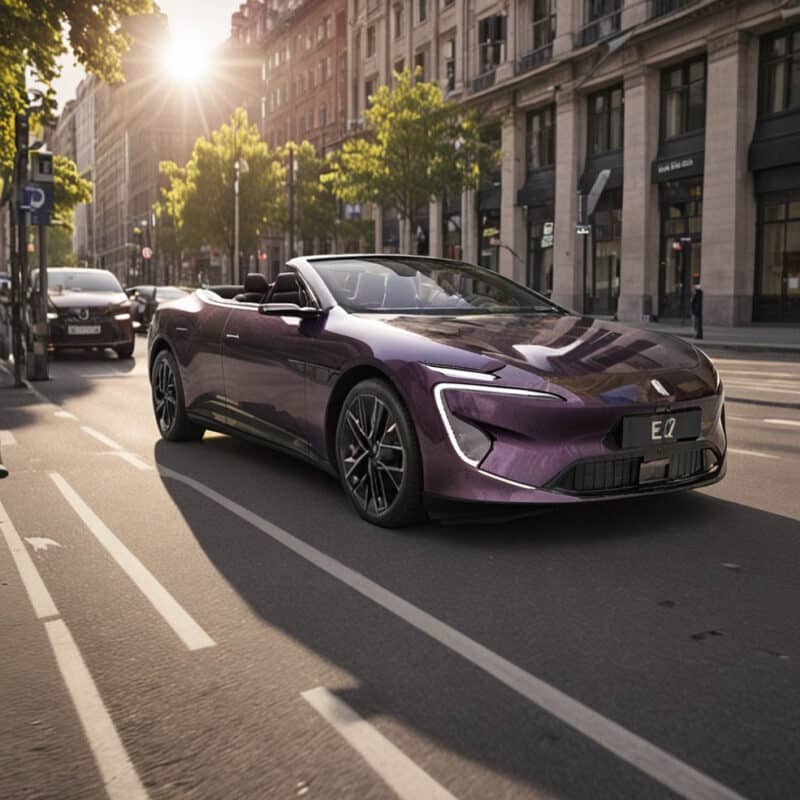

Convertibles are not popular in China. Some of the few that exist are utilitarian vehicles like the BAW 212. One early attempt was the BYD S8 which looked like a mash up of a Mercedes CLK and a Renault Megane CC. Sales were so bad that it was only produced between 2009-2010 and sold a grand total of 103. MG are obviously a bit more hopeful with the Cyberster.

Avatr started out as a joint venture between Changan and Nio. After Nio withdrew due to financial problems battery producer CATL joined the brand. Currently Changan holds 41% ownership, CATL 14%, Chongqing Chengan Foundation 11% and the remainder spread over various investment groups. Huawei is not a shareholder but provides much of the tech including the HarmonyOS operating system for the cockpit and Huawei ADS 2.0 for ADAS (Advanced Driver Assistance Systems). Huawei’s self-driving system is one of the most advanced in China.
The Avatr 12, pronounced one-two, is the brand’s second car and follows on from the Avatr 11, an SUV. Revealed at IAA Mobility last year the sedan began deliveries in December and is currently outselling the Avatr 11. Recently the 2024 version launched with a discount. At the moment the car is a pure EV but later this year an extended range EV should launch which will see starting prices come down further.
 Avatr 12 electric sedan from China on display at the IAA Open Space Königsplatz as part of IAA Mobility 2023, Munich Germany.
Avatr 12 electric sedan from China on display at the IAA Open Space Königsplatz as part of IAA Mobility 2023, Munich Germany.Source: Autohome
Yommie
SpeedLimited
- Oct 2, 2013
- 64,173
- 37,188
- Country of Origin

- Country of Residence


Xiaomi SU7 sells like hotcakes, but test cars crash at the same pace
Lots of reports of crashed or defected SU7 emerges all around China.
 carnewschina.com
carnewschina.com
Xiaomi SU7 sells like hotcakes, but test cars crash at the same pace
Reading Time: 4 minutes
Jiri Opletal
April 1, 2024
0

News like this to your inbox or phone?
Weekly summary to your inbox
I want this
Never miss and important news
Get Instant notification once the news is published.
Follow Us
Xiaomi launched its first electric vehicle, SU7, on March 28 in Beijing. China’s Apple Car received nearly 90,000 firm orders 24 hours after launch, which means it is basically sold out in 2024. Deliveries will start by the end of April.
The EV has already hit 59 showrooms in 28 cities nationwide where test drives are available, attracting large crowds. Some customers even wait until 3 am to drive it. Moreover, Xiaomi handed the SU7 to many lifestyle influencers for driving reviews.
With so many Xiaomi SU7s on the streets, negative narratives started to emerge. Videos and pictures of Xiaomi’s sedan crashed and accidents spread over Chinese social networks. In one of those videos, the driver of the Aqua Blue SU7 loses control of the test vehicle and crashes into the side wall. Before that, he performed inexperienced driving; however, modern EVs should be able to handle that and not allow such a dangerous maneuver.
This points out the failure of the vehicle traction control software. The well-debugged TC system must sense wheel slip and adjust torque via motor or targeted brake application. Based on the video, Xiaomi’s TS system is far from advanced, although it is unclear whether this is due to SW or HW.
For example, Tesla would most likely not allow such an unsafe maneuver. This is not because Tesla’s regular TC would be better, as all systems just measure driven wheel revolutions per minute (RPM) and react when those get too high, as the wheel slips, leading to a reaction delay.
The reason is Tesla has a second TC system for motor traction control. The data from the electric motors are used to measure the actual wheel grip, which gives the possibility to react when the wheel loses traction but isn’t slipping yet. This has its limit, so the regular TC is also used; however, it can yield remarkable results.
Another video shared by Inside China Auto shows the Xiaomi SU7 wearing Radiant Purple with defective air suspension, transforming the testing vehicle into the unintentional lowrider.
Weibo user 王金生 shared today a set of pictures of SU7 involved in a minor accident, concluding the car handled the collision well with only minor damage to the body.
 Minor accident of SU7. Credit: 王金生
Minor accident of SU7. Credit: 王金生Another recorded crash is a standard rear-end collision of an SU7 with a German legacy maker. This collision most likely didn’t involve any defect, just an inexperienced driver. Interestingly, it happened before the launch event on March 24.
Rear-end collision of SU7 with BMW. Credit: 丢掉烦恼
In early February, Xiaomi conducted winter testing in Heiha City in Northeastern China. The SU7 made headlines when it crashed on a snowy road, recording the first historical crash of a Xiaomi car.
Editor’s comment
It will be interesting to watch how marketing guru Lei Jun, Xiaomi’s CEO who managed to get half of China excited about Xiaomi’s first EV, handles this situation.Xiaomi is the consumer electronic giant famous for its great price/value ratio. However, there is a difference between giving hundreds of smartphones, vacuum cleaners, watches, or TVs for review to Xiaomi’s loyal and excited lifestyle influencers, Douyiners (the Chinese name for Tick Tok is Douyin), or Weibo bloggers.
I have seen hundreds of reviews of Xiaomi products in China in past years. I can tell you that lending the vehicle, which still needs to polish some SW flaws (not surprising as it is literary their first car) to crazy TikTok stars who are masters in creating eye-catching and shocking content suitable for the platform is a perfect storm. In the gadget reviews, I saw phones thrown from the 10th floor to prove their durability. Powerbanks were cast into the fire, and you better don’t ask me what they did with robotic vacuum cleaners.
Giving those loyal influencers a 2.5 tons heavy, 5-meter-long car with several hundred horsepower under the hood and pretending it’s another gadget to have fun with is something that can backfire heavily.
However, not only influencers are to blame. Many regular Xiaomi fans and potential customers have started to perform test drives. During the launch event, much emphasis was put on how much connectivity SU7 has. And it is truly incredible – it is deeply integrated with your home appliances, Xiaomi phone, TV, watches, and even iPhone. You can control your car from your home and vice versa – for example, even open the curtains in your living room from inside your vehicle. However, all this creates an image of the SU7 as another gadget in the Xiaomi ecosystem. Definitely, some respect for the 663 hp AWD monster would be needed.
Xiaomi launched just three days ago, and the company needs to address this in the early stages. Otherwise, the perfectly crafted image Lei Jun created might start to crumble.
Yommie
SpeedLimited
- Oct 2, 2013
- 64,173
- 37,188
- Country of Origin

- Country of Residence

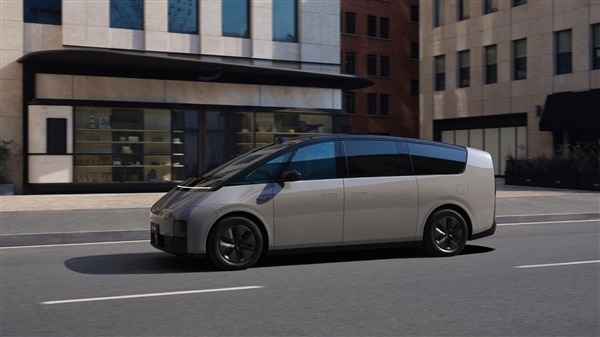
Li Auto surpasses 700,000 cumulative sales
Li Auto becomes the first Chinese EV startup to sell more than 700,000 cars cumulatively. The brand aims for sales this year of 800,000 alone.
 carnewschina.com
carnewschina.com
Li Auto surpasses 700,000 cumulative sales
Reading Time: 3 minutes
Mark Andrews
April 1, 2024
0
 Li Mega all electric MPV
Li Mega all electric MPVNews like this to your inbox or phone?
Weekly summary to your inbox
I want this
Never miss and important news
Get Instant notification once the news is published.
Follow Us
Li Auto has become the first new energy car startup in China to surpass cumulative sales of 700,000. During March Li Auto delivered 28,984 cars a year-on year increase of 39.2%. This took the cumulative total to 713,764 since sales began in 2019. The company however wants to sell 800,000 cars this year alone.
Li Auto was founded in 2015 by Li Xiang, which is also the Chinese name of the company, and until recently only sold extended range EV cars. For a long time it has been a poster child of the Chinese new energy vehicle market together with fellow startups Nio and XPeng. All three companies have listings on US stock exchanges. So far the bet on EREV cars has paid off well for Li Auto and very quickly the company began outselling Nio and XPeng.
In China sales in the first quarter usually take a dip from the end of the previous year, this is partly due to Chinese New Year falling in January or February. Back at the end of last year Li Auto managed 50,353 sales in December. Nonetheless sales in the first quarter of this year are up 52.9% with a total of 80,400 vehicles.
Li Auto is targeting sales of 800,000 cars this year and aims to challenge 100,000 deliveries a month. Such a figure would be quite an achievement given that Li Auto sales were 376,030 last year but it should be noted that this itself was nearly three times the year before when sales were 133,246.
To achieve the 800,000 target Li Auto is going to need to not only increase sales of existing models but also introduce new ones. Key products for this year are the Li Mega, the brand’s first all-electric car, and the forthcoming five seater L6 SUV.
Deliveries of the Li Mega began last month and have so far not quite reached the level Li Auto was anticipating. While there are no full month figures available it is known that the Mega managed to sell 2,089 in fourteen days with 1,058 in the third week of the month and 1,031 in the fourth week. This has made it the best selling all electric MPV despite costing 559,800 yuan (77,400 USD).
The Li L6 will launch later this month and is the newest addition to the very successful L series of extended range electric SUVs. Currently Li Auto’s best seller is the smallest and cheapest of the series the L7. With the L6 being smaller still and anticipated to be priced at below 300,000 yuan (41,500 USD) this should also become a big seller for the brand.
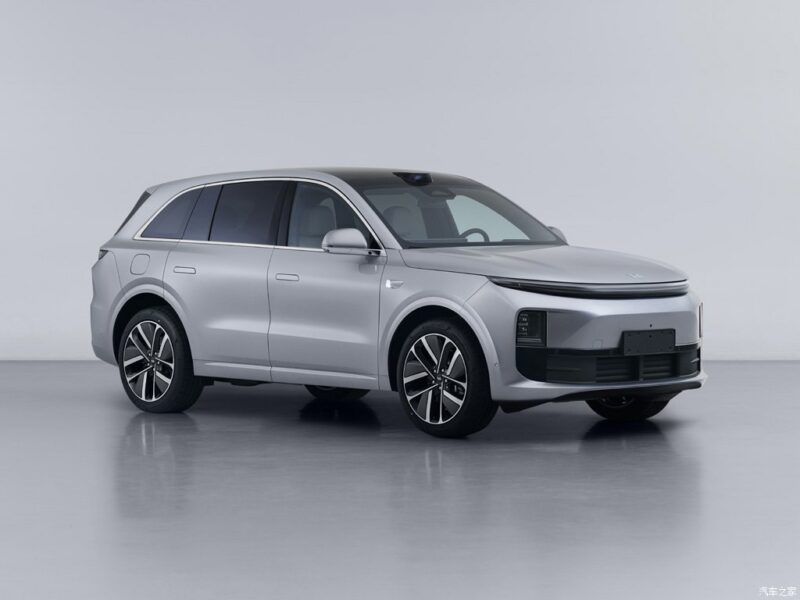 Li L6 SUV due to launch this month
Li L6 SUV due to launch this monthWill Li Auto achieve 800,000 sales this year and in doing so more than double its cumulative sales? Although the sales of this quarter only amount to just over a tenth of the target achieving the level should not be discounted. Car sales in China are usually skewed to the second half of the year with as mentioned the first quarter being quiet due to Chinese New Year. That the start of this year has already shown sales well up on this time last year means that we can be fairly confident that Li will surpass last year’s sales by a comfortable margin especially given the new models and 2024 versions of existing ones. More likely, though, we will see sales in the 500-700,000 region this year rather than 800,000.
Sources: Li Auto, Yiche
Yommie
SpeedLimited
- Oct 2, 2013
- 64,173
- 37,188
- Country of Origin

- Country of Residence

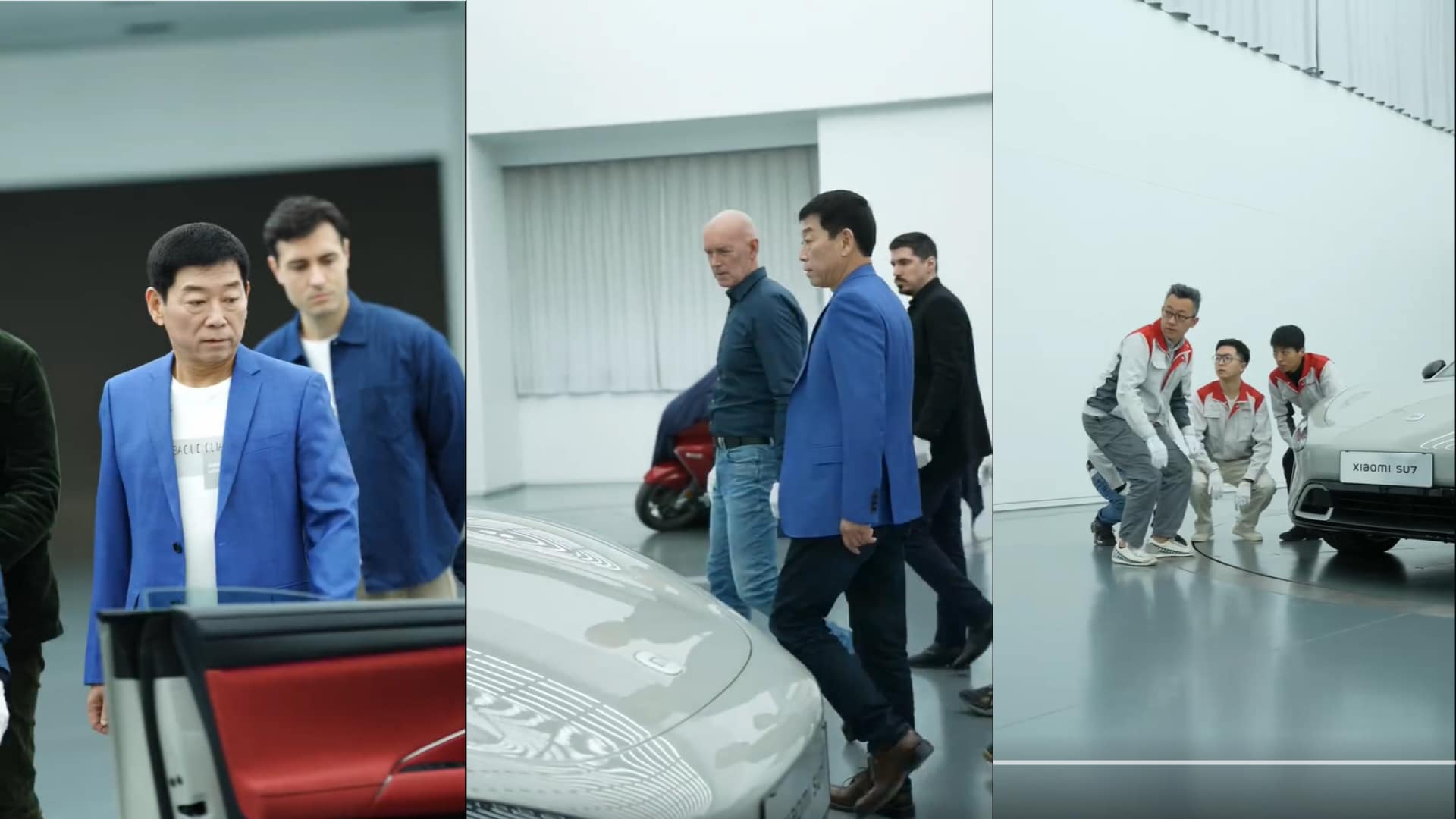
Chairman of Great Wall Motor is taking notes from Xiaomi SU7
GWM chairman Wei Jianjun gathered his R&D team to get acquainted with his Xiaomi SU7 electric sedan.
 carnewschina.com
carnewschina.com
Chairman of Great Wall Motor is taking notes from Xiaomi SU7
Reading Time: 3 minutes
Denis Bobylev
April 1, 2024
0

News like this to your inbox or phone?
Weekly summary to your inbox
I want this
Never miss and important news
Get Instant notification once the news is published.
Follow Us
Chairman of Great Wall Motor Wei Jianjun invited his R&D team to get acquainted with his Xiaomi SU7. Mr. Wei received it as a gift from Xiaomi founder and CEO Lei Jun during the official launch ceremony of the SU7. GWM chairman mentioned that Xiaomi achieved a remarkable result in just three years of working in the automotive industry.
Wei Jianjun is the chairman of the well-known Chinese automaker Great Wall Motor. He has been managing the company since 1990. His family currently owns over 50% of GWM’s shares.
Wei Jianjun is taking notes from Xiaomi

On March 28, Wei Jianjun took part in the official launch of the Xiaomi SU7 electric vehicle. Before the launch ceremony, he exchanged gifts with Xiaomi’s CEO. Mr. Wei gave Lei Jun the recently launched Tank 700 Hi4-T PHEV off-roader. And Xiaomi CEO handed him the newly released Xiaomi SU7.
 From left to right: BAIC chairman Zhan Jiangyun, GWM chairman Wei Jianjun, Nio co-founder William Li, Xpeng founder He Xiaopeng, Li Auto founder Li Xiang
From left to right: BAIC chairman Zhan Jiangyun, GWM chairman Wei Jianjun, Nio co-founder William Li, Xpeng founder He Xiaopeng, Li Auto founder Li XiangDuring the launch ceremony, Wei Jianjun sat in the first row next to the founders of Nio, XPeng, and Li Auto. The launch event was also visited by Changan’s vice-president, Deepal’s CEO, and BAIC chairman Zhan Jiangyun.
On April 1, three days after the Xiaomi SU7 launch, Wei Jianjun shared a video on Weibo (Chinese social media). In this clip, the GWM R&D team gets acquainted with the Xiaomi SU7 sedan. Wei Jianjun also added an inscription to his post, stating that “Xiaomi Auto was established just three years ago, but their design undoubtedly has lots of design features”. In the video, Wei Jianjun also mentioned that the Xiaomi SU7’s cabin is innovative.
It seems that the Great Wall Motor chairman has gathered his R&D team to get acquainted with the first Xiaomi car and take some notes. Recently, GWM was lagging behind the industry in terms of new energy vehicles. Xiaomi’s fresh vision of the industry can be useful for the future development of GWM NEVs.
More on Xiaomi SU7

Xiaomi SU7 received nearly 90,000 firm orders 24 hours after launch. It is an electric sedan with dimensions of 4997/1963/1455 mm and a wheelbase of 3000 mm. Its entry-level variant has a 73.6 kWh LFP battery and a 220 kW electric motor on board. The second option has the same e-motor with an LFP pack for 94.3 kWh. And the top-trim SU7 has 4WD for 495 kW and a 101 kWh ternary NMC battery. Depending on the battery option, its range is 700 – 830 km.
The Xiaomi SU7’s price range is 215,900 – 299,900 yuan (29,900 – 41,500 USD). It is available in 59 showrooms in 28 cities across China. However, some negative narratives started to emerge. Some drivers of the SU7 lost control and crashed. Other drivers faced quality issues like deactivated air suspension or faulty taillight unit.
Source: Weibo
Hamartia Antidote
Elite Member
- Nov 17, 2013
- 39,483
- 22,833
- Country of Origin

- Country of Residence


BYD sold over 300,000 EVs in Q1, but is it enough to keep its lead over Tesla? [Update]
China’s leading electric car maker, BYD, recorded over 300,000 EV sales in Q1 2024, up 13% over last year. Is...
 electrek.co
electrek.co
BYD sold over 300,000 EVs in Q1, but is it enough to keep its lead over Tesla?

Although Tesla has yet to report Q1 delivery numbers, estimates are all over the place. Yet, they are still consistently higher than the 300K BYD sold.
@Yommie
Yommie
SpeedLimited
- Oct 2, 2013
- 64,173
- 37,188
- Country of Origin

- Country of Residence


BYD sold over 300,000 EVs in Q1, but is it enough to keep its lead over Tesla? [Update]
China’s leading electric car maker, BYD, recorded over 300,000 EV sales in Q1 2024, up 13% over last year. Is...electrek.co
BYD sold over 300,000 EVs in Q1, but is it enough to keep its lead over Tesla?
View attachment 30691
@Yommie
Personally, I think Huawei and Xiaomi would be a bigger challenger for Tesla. BYD is a battery maker, not exactly a top notch car maker.

Avatr Technology - Wikipedia
Pakistan Defence Latest
-
Israel and USA 'jammed GPS signals' in days before Iran's 300-missile launch to confuse attackers (17 Viewers)
- Latest: Lulldapull
-
-
A GIDS Shahpar II UAV of the PAF broke midair and crashed near Darya Khan, Punjab (3 Viewers)
- Latest: Broghil
-
-
Country Watch Latest
-
Pakistan to Deliver First Batch of Anti-Tank Guided Missiles to Bangladesh (13 Viewers)
- Latest: Asfandyar Bhittani
-
Why India Deliberately kept Weakened Bangladesh’s Military | InShort (7 Viewers)
- Latest: Vikramaditya1
-
Not just engines, Tejas Mk-1A delivery could be hit over key Danish part, now on export blacklist (6 Viewers)
- Latest: Circadian Rhythm
-
-
Latest Posts
-
Israel and USA 'jammed GPS signals' in days before Iran's 300-missile launch to confuse attackers (17 Viewers)
- Latest: Lulldapull
-
-
-
